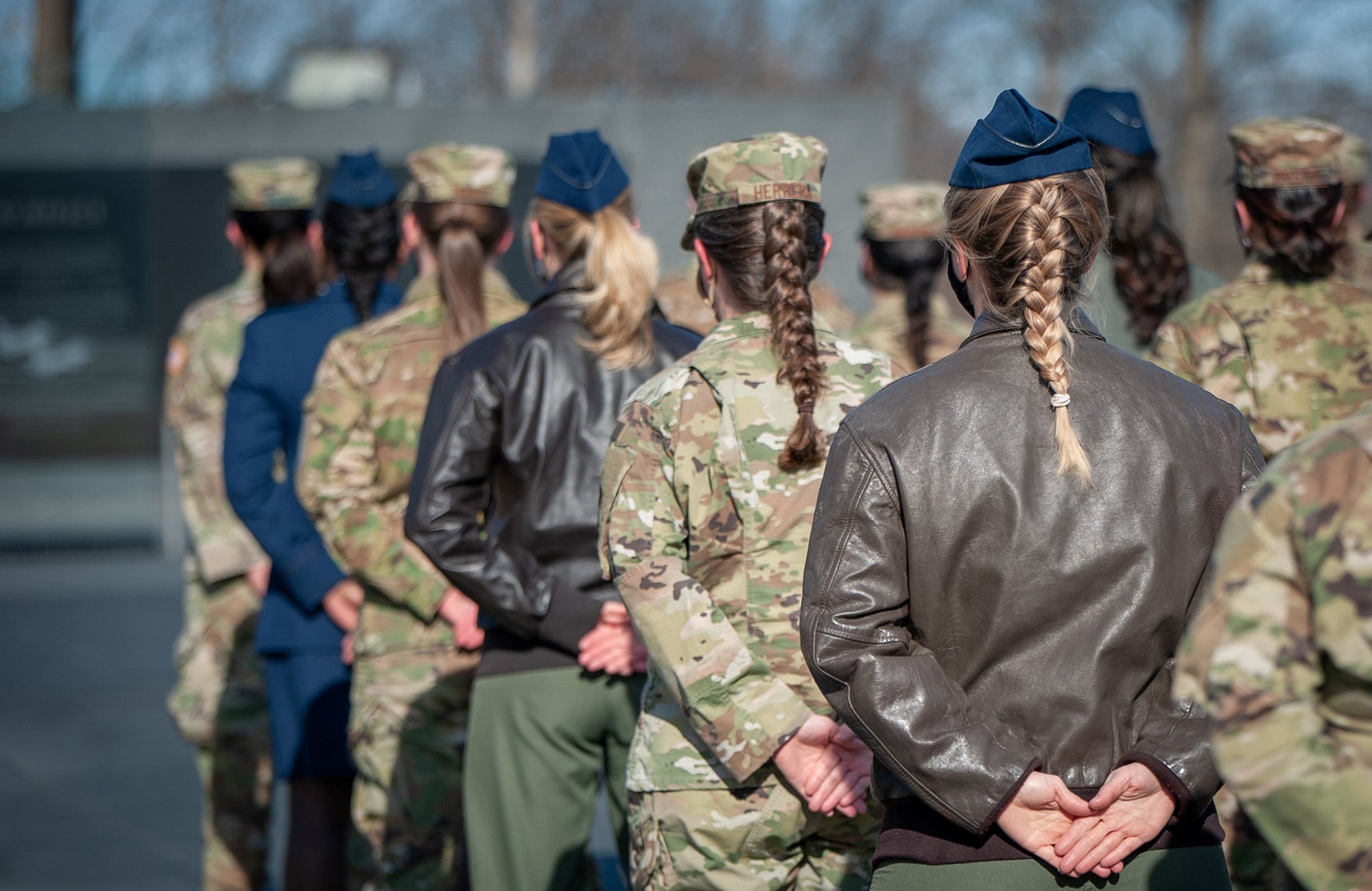Though women have technically been welcome in any military specialty since late 2015, it’s been a slow process to integrate them into all units, according to a report released Thursday by the Rand Corp.
The U.S. and its partner nations will need to continue to integrate women, at all ranks, to be able to solve complex security challenges, the report said, using the “Women, peace and security” concept developed by the UN in 2000. As it currently stands, women make up 18% of the Army. In the Marine Corps, the representation is half that.
In 2020, DoD published its own Women, Peace, and Security Strategic Framework and Implementation Plan, which aimed to not only ensure women hold varied positions throughout all parts of the department, but that partner nations fostered the same participation for women while ensuring human rights protections for women and girls in their respective countries.
The RAND study points out that the military is still walking a fine line between touting women and men as having the same capacity to serve while celebrating the different perspectives women bring to the table.
“There are concerns with both approaches: The first encourages women to conform to established masculine norms, while the latter encourages gender essentialism,” according to the report — in other words, that there are traits only women or only men possess.
The problem is most pronounced in special operations. A 2021 U.S. Army Special Operations Command study found that women were often excluded or singled out for being parents, for what they wear and for perceptions that they are either too sweet or too tough.
To show how women’s contributions have improved operational outcomes, the report’s authors created a series of five real-life scenarios.
Afghan special operations forces are one example of successful integration, the report found.
“During mission planning stages, the presence of women Afghan SOF proved key to gaining intelligence for sensing missions,” the report stated. “These forces gathered information from women and children in ways Afghan men and foreign SOF were not able to,” noting the cultural norms preventing men from speaking to women and children outside of immediate families.
During the 2021 Tradewinds exercise in U.S. Southern Command, U.S. trainers noticed that while women served in the Guyanese military, they were often relegated to support roles. Trainers encouraged leadership to build female-only facilities along the contested, but undermanned Guyana-Venezuela border, so that women could help secure the area alongside men.
“By bringing WPS principles and experts to bear on the 2021 Tradewinds exercise, Guyana was able to address an operational obstacle and the United States gained a partner in the SOUTHCOM region that has men and women in uniform who are better equipped to detect the nuances and dynamics of challenges, such as human trafficking, enhancing the security and stability of nations across the region,” according to the report.
The report recommends that DoD continue to bring women along when developing or executing missions or policies, both within the U.S. military and when working with partner nations.
“Without an effort to integrate both women and men into all roles across DoD, the military will not be able to meet the security situations of today and tomorrow that will require people to unpack complexity and solve problems, not as a leader in isolation but cooperatively,” according to the report.
Meghann Myers is the Pentagon bureau chief at Military Times. She covers operations, policy, personnel, leadership and other issues affecting service members.




